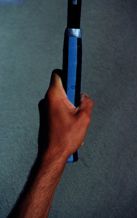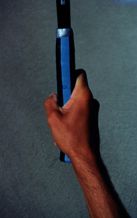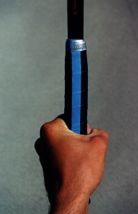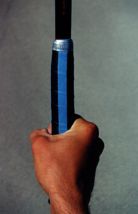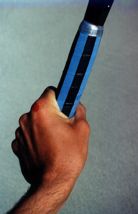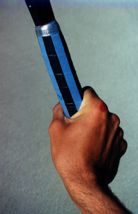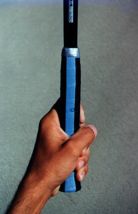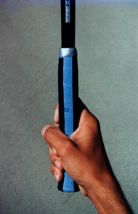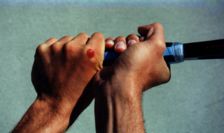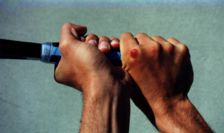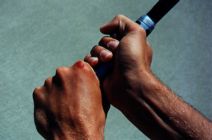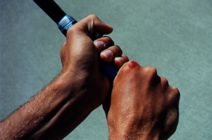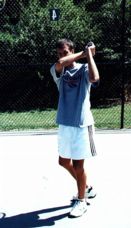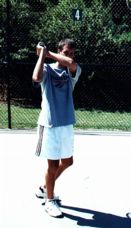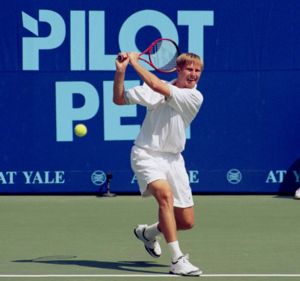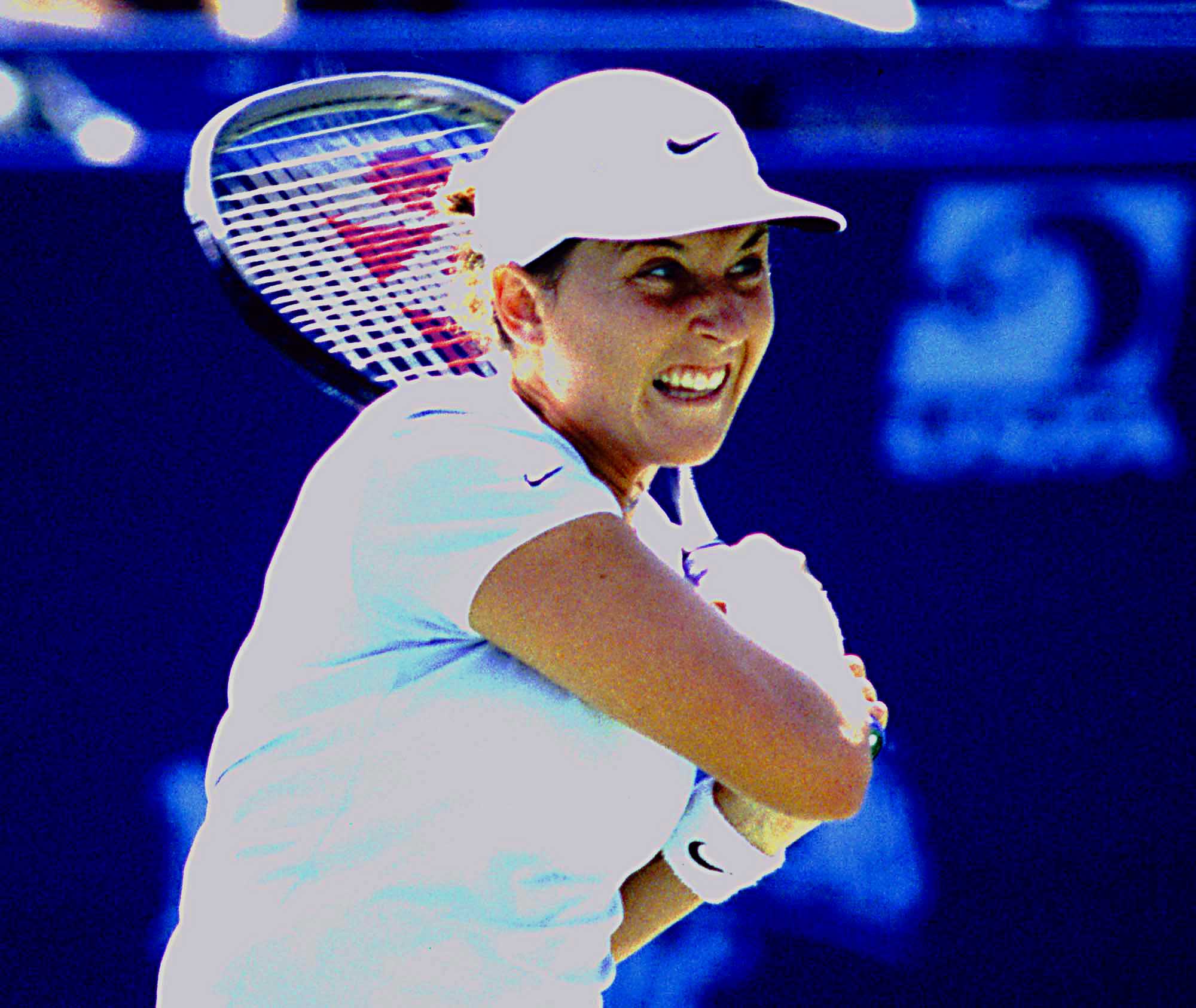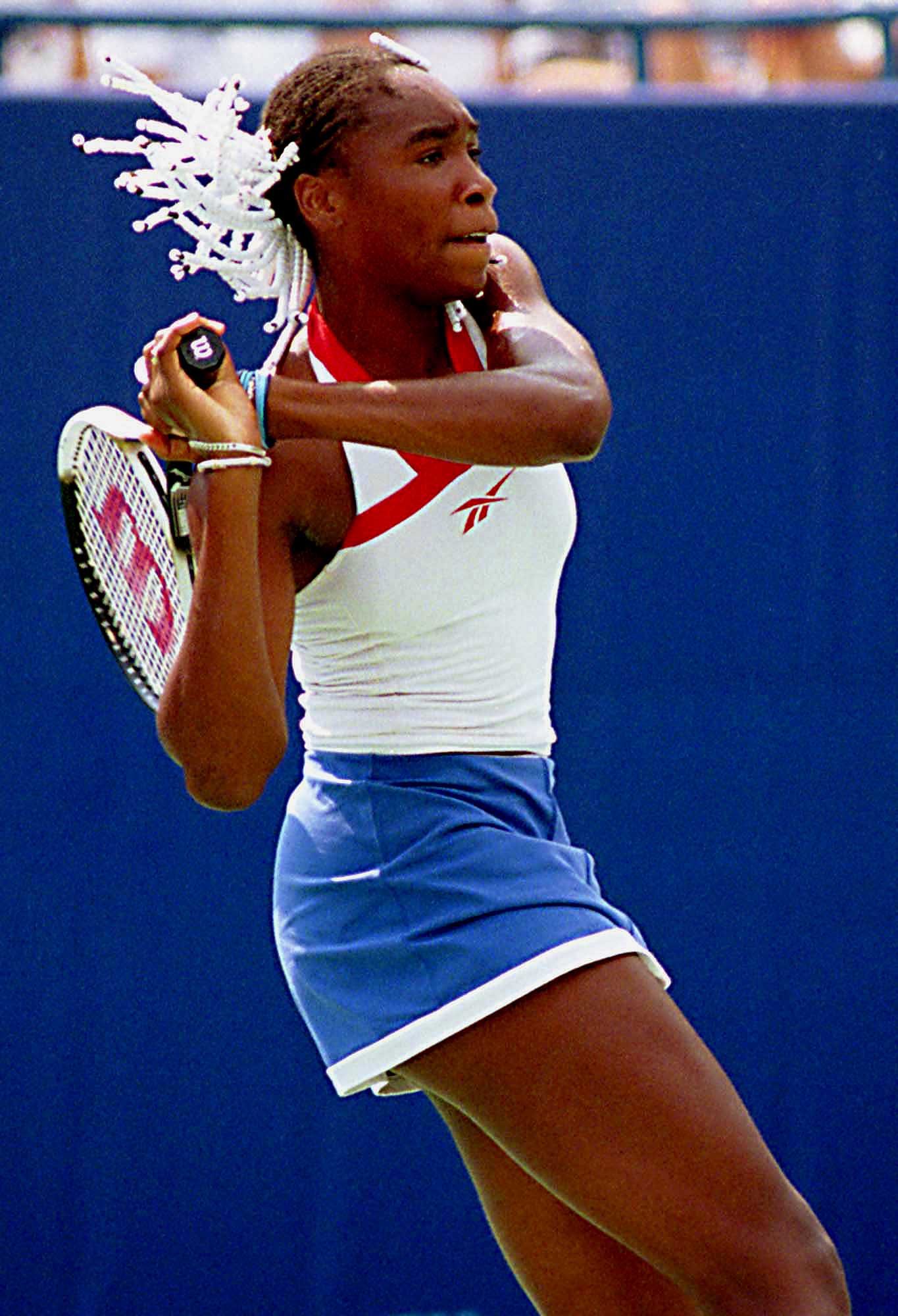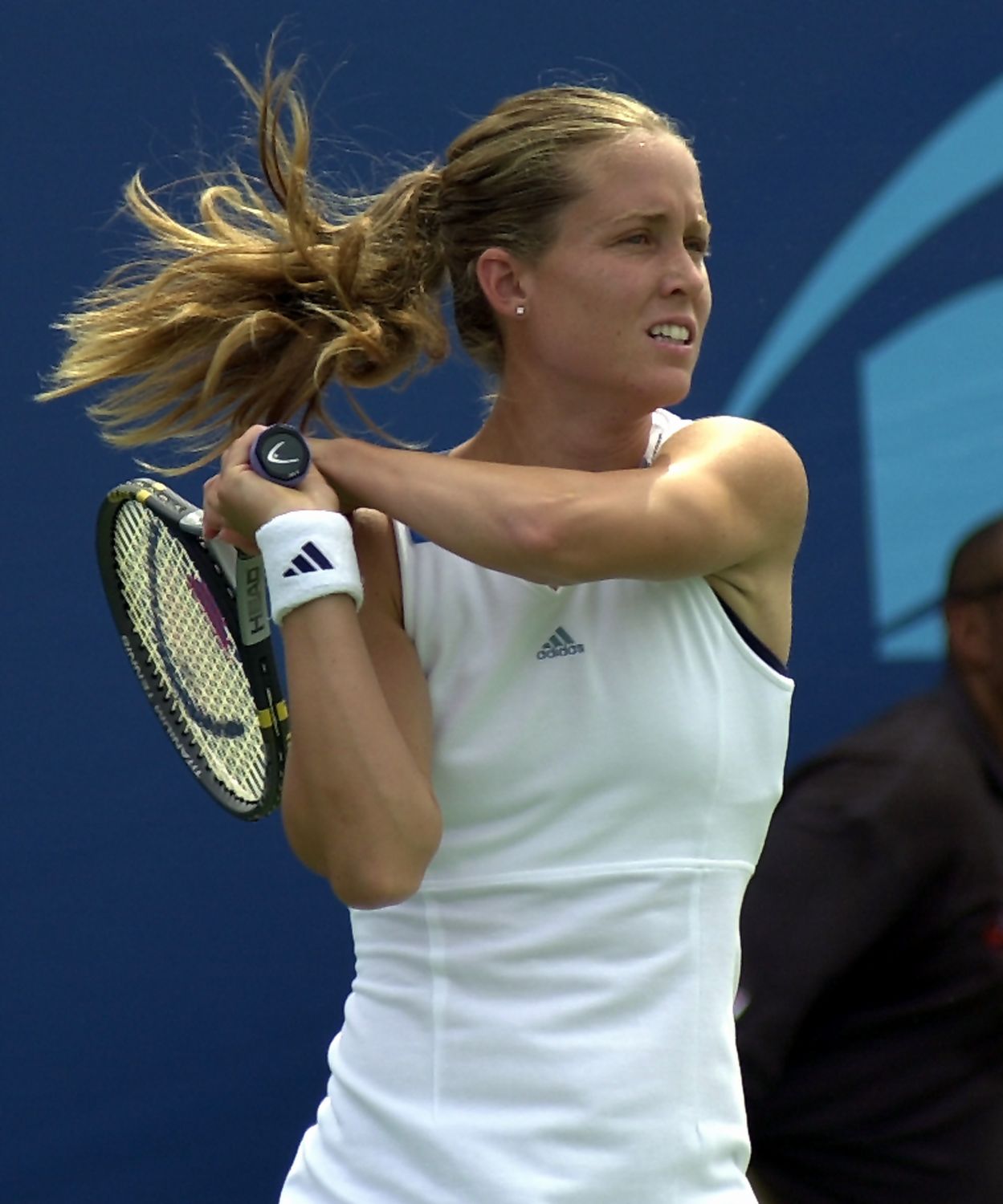August 2003 Article Turbo Tennis Archives:
Tennis Server
|

 |
to the Backhand: The Two-Handed Backhand
There was a time when the two-handed backhand was an exception…today is more often the rule. The modern game of tennis has certainly seen the rise of the two-handed backhand. In fact, I would dare say that if one looks at the top 100 players on either tour, one would find the two-handed backhand more common than the one-handed variety. There are some clear advantages to the two-handed backhand:
The major disadvantages associated with the two-handed backhand are:
I, myself, use a two-handed backhand and have learned to integrate the one-handed slice into my game. I use the slice to vary my spin, to hit lower bouncing balls, to approach the net off the backhand wing, and to block return of serves when the ball forces me wide. However, about 80% of all my backhands are hit with two hands. For me, I find hitting the short cross-court angle to be a bit easier with two hands than with one. However, I know players who profess the opposite to be true. In our Integrated Approach to Tennis, we always begin with grip. When one looks at the numerous ways in which players use two hands to grip the racquet, there are fewer "rules." Any combination of grips that feels right and allows for power and control is acceptable. Every player who tries a two-handed backhand needs to experiment with different grip combinations. Eventually, each player will find a combination that works best for him or her. However, most players who play on the tours use one of two combinations. Their dominant hand will be in either a continental/hammer or eastern backhand grip. The non-dominant hand is usually in what would be an eastern forehand grip. Please remember that blue area of the grip represents the top, side and bottom. The black areas represent the bevels. Here is the continental grip: Here is the hammer grip. This is really a closed fisted continental grip: Here is the eastern backhand grip: Most players use one of these three grips with their dominant hand because they allow for the non-dominant hand to be taken off the racquet to hit a backhand. This will invariably happen when stretched wide for a shot. However, it may occur deliberately when disguising a drop or approach shot. In his prime, Bjorn Borg would take his non-dominant hand off the racquet the moment after impact. He would finish his stroke using one hand. Watching him play on the Master’s Tour, I was struck by the fact that he now finishes his stroke with both hands on the grip. I suspect that this is why his backhand is less effective than it used to be…but I could be wrong. The non-dominant hand is adding support and is usually in an eastern forehand grip. Here, is the eastern forehand grip: Some players hit a two-handed backhand with both hands in an eastern forehand grip. Although this does not require any severe grip changes when going from forehand to backhand, it is not a combination I would advise a player to adopt. Quite frequently, the balls are hit without much spin when using this combination, and if you are stretched wide or on the run, your shot is likely to travel long. Now in reality, the non-dominant hand does more than add support. In fact, it is often times useful to envision yourself hitting a forehand with the non-dominant hand. This visualization will help make the two hands (and arms) work in better unison. How close your keep the two hands together on the grip can vary greatly. I have seen players on both tours who deliberately leave a space of almost an inch between each hand. However, the vast majority of pros who use the two-handed backhand are likely to keep the hands close together. The non-dominant hand should be on top of the dominant hand. You will note in the above that the eastern backhand and continental grips respectively are being used by the dominant hand, and the non-dominant hand is in an eastern forehand grip in each picture. Regardless of what combination you decide to use with respect to grips, the important part about the backswing is that there should be very little. If one looks at Andre Agassi, he does not take his racquet back very far. Still, he is able to crush the return of serve off of either wing. When one uses a shorter backswing there is more margin for last second adjustments and less likelihood that something will go wrong with the stroke. The two-handed backhand lends itself to shorter backswings. In the modern game of tennis, this is a clear advantage. When hitting the two-handed backhand there is a wide strike zone. Contact points can vary greatly when hitting the two-handed backhand. Thus, this backhand is a more forgiving shot. Now, every player will find the ideal contact point that allows her/him to really tee off on the ball. However, when it comes to making a decent shot, there is a lot of latitude with respect to contact points and the two-handed backhand. The most important ingredient that is common to all two-handed backhands is the finish. I tell my students that they should imagine that they are throwing a sack of potatoes over their shoulder. This cue usually results in a proper finish. Below, we see Brent executing the proper finish for the two-handed backhand: Here are some shots of the pros executing proper finishes: Although I believe the two-handed backhand to be the "ideal" backhand for the modern game, there are plenty of pros on both tours who would challenge this statement. Look at the "Spanish Armada." Most of these young men from Spain are using one-handed backhands…with great effectiveness. It should also be noted that Pete Sampras changed from a two-handed backhand to a one-handed backhand when he was in his early teens. Why? Well, he wanted to win Wimbledon and he believed that a one-handed backhand would enable him to volley better. I think his record at this Slam event speaks to the veracity of his belief. Still, I think for most players that the two-handed backhand is the quicker, easier and more effective stroke. I say this with some trepidation, but one must realize that even the two-handed player needs a one-handed slice to play effectively on all surfaces. This is exactly what Mat Wilander did to improve his game when he was on the men’s tour. If you are using a one-handed backhand and believe that it is ineffective or causing you arm, wrist or shoulder problems…you should consider adding the two-handed shot to your arsenal. It is my belief that Pete Sampras could have won Roland Garros, if he had resurrected his two-handed backhand for those high bouncing balls. So, give this wonderful stroke a chance. I am sure that if you add it to your arsenal, or work to improve your existing two-handed backhand that you will in no time become a tennis overdog!
1996 - 2002 | 2003 - Present
This column
is copyrighted by Ron Waite, all rights reserved. Questions and comments
about these columns can be directed to Ron by using this form.
Ron Waite is a certified USPTR tennis instructor who took up the game
of tennis at the age of 39. Frustrated with conventional tennis methods
of instruction and the confusing data available on how to learn the
game, Ron has sought to sift fact from fiction. In his seven years of
tennis, Ron has received USTA sectional ranking four years, has successfully
coached several NCAA Division III men's and women's tennis teams to
post season competition, and has competed in USTA National singles tournaments.
Ron has trained at a number of tennis academies and with many of the
game's leading instructors.
In addition to his full-time work as a professor at Albertus Magnus
College, Ron photographs ATP tour events for a variety of organizations
and publications. The name of his column, TurboTennis, stems from his
methods to decrease the amount of time it takes to learn and master
the game of tennis.
|



October 2022 Tennis Anyone: Patterns in Doubles by John Mills. September 2022 Tennis Anyone: Short Court by John Mills. |
 You will join 13,000 other subscribers in receiving news of updates to the Tennis Server along with monthly tennis tips from tennis pro Tom Veneziano.
You will join 13,000 other subscribers in receiving news of updates to the Tennis Server along with monthly tennis tips from tennis pro Tom Veneziano. 
